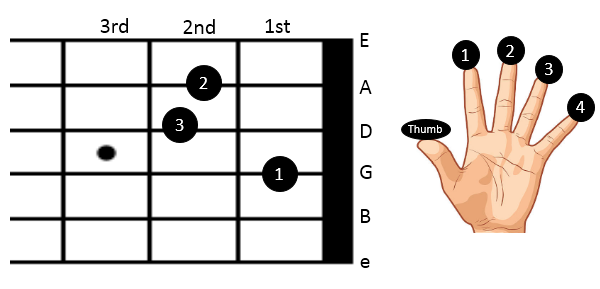desaiajinkya1134@gmail.comGuitar Chords#BasicGuitarChords, #ChordDiagrams, #EasyGuitarChords, #EGuitarChords, #GuitarChordsForSongs, #GuitarChordTutorial, #GuitarForBeginners, #GuitarLessons, #GuitarPractice, #GuitarTheory, #LearnGuitarChords, #MajorAndMinorChords, #PlayGuitar

Here are some tips for playing the E Major chord on the guitar:
1. Finger Placement
- Index Finger: Place it on the 1st fret of the 3rd string (G string).
- Middle Finger: Place it on the 2nd fret of the 5th string (A string).
- Ring Finger: Place it on the 2nd fret of the 4th string (D string).
2. Strumming
- Strum all six strings. The E Major chord uses every string on the guitar, so make sure each one rings out clearly.
3. Pressure and Clarity
- Apply even pressure with your fingers on the frets. If any notes sound muted, check that your fingers are pressing down firmly and close to the frets.
4. Thumb Position
- Position your thumb behind the neck, roughly in the middle. This gives your fingers more flexibility and control over the fretboard.
5. Finger Arching
- Ensure your fingers are arched, so they don’t accidentally mute adjacent strings. This is particularly important for the 3rd string.
6. Practice Transitions
- Practice transitioning to and from the E Major chord with other common chords (like A Major or B Major) to improve your overall fluidity.
7. Common Issues
- If you hear buzzing, it could be due to insufficient pressure or your fingers not being close enough to the frets. Adjust your hand position accordingly.
8. Warm-Up Exercises
- Warm up with finger exercises to build strength and flexibility, which can help make playing the E Major chord easier.
Regular practice with attention to finger positioning and strumming technique will help you master the E Major chord quickly.
